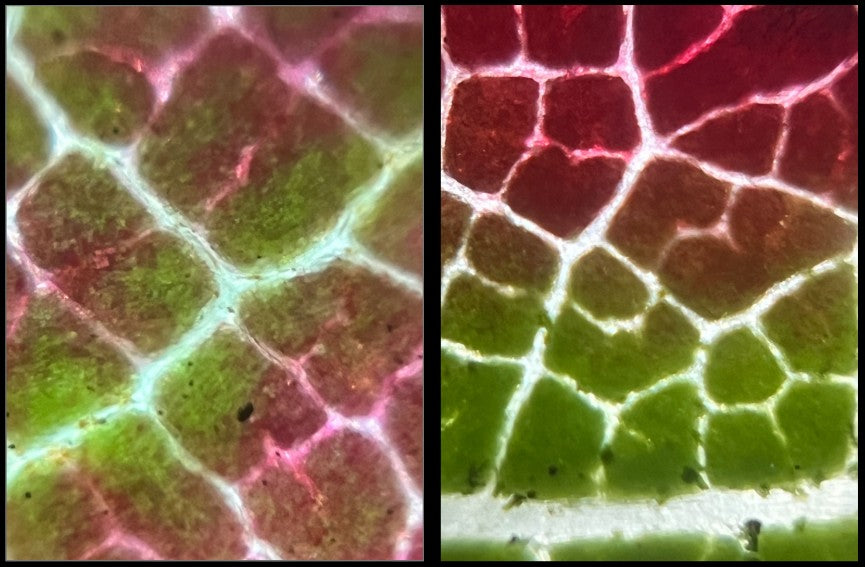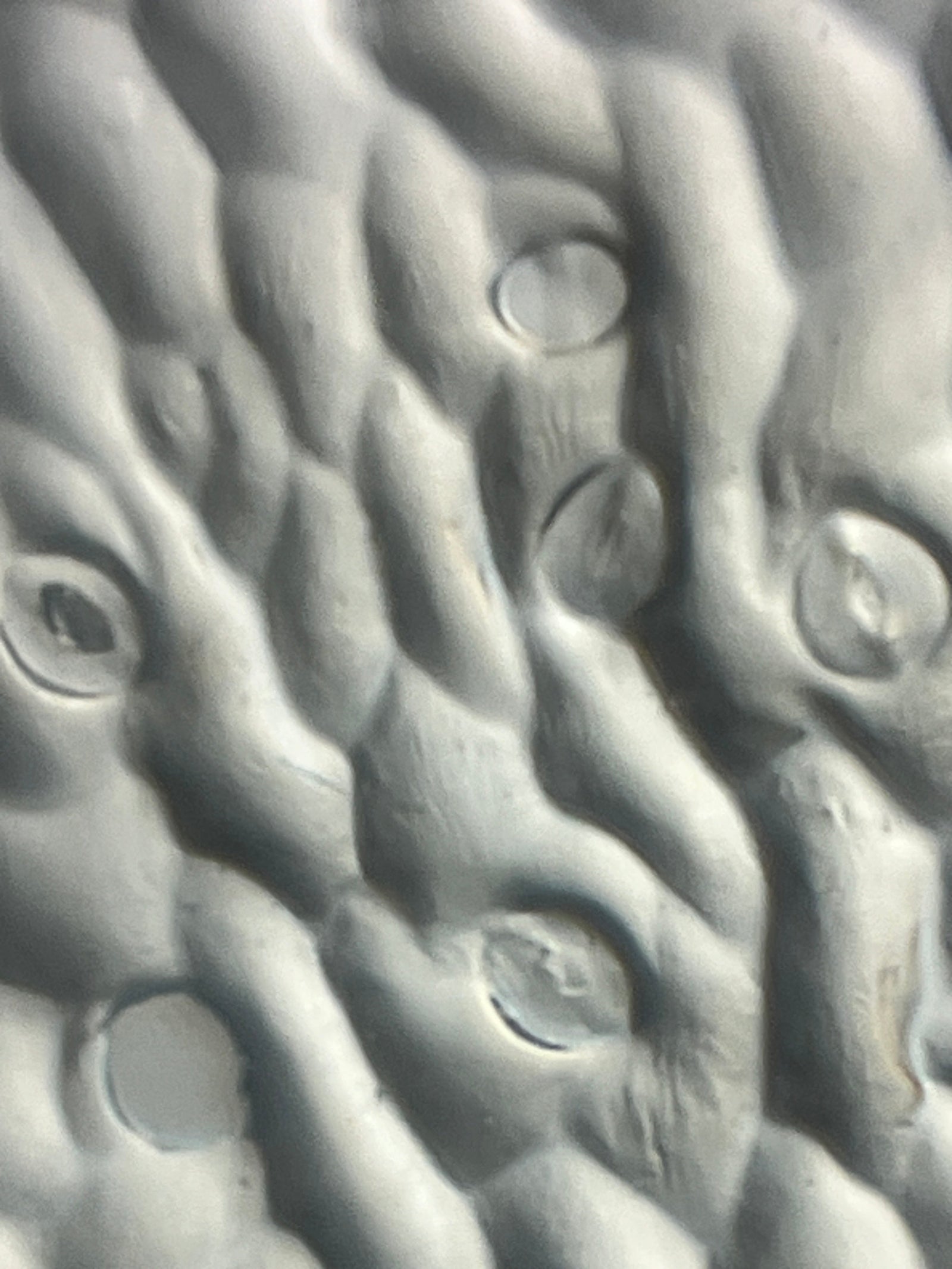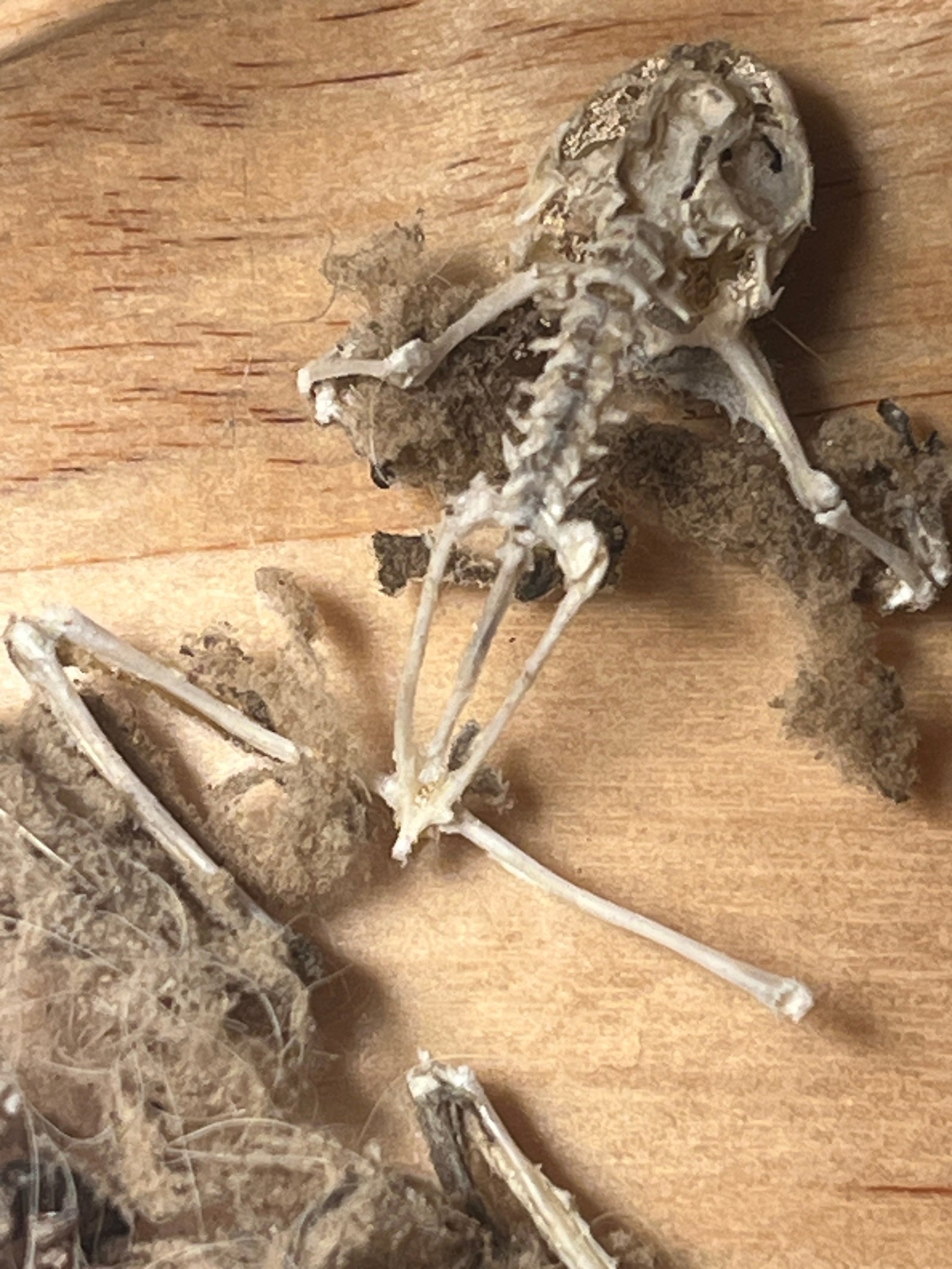It is the middle of March, we just adjusted our clocks for Daylight Saving Time, and my garden beds are filled with soil in anticipation of the seeds and plants that will soon be growing in them! The key to a healthy garden is healthy soil. But what does that mean? It means there should be a lot of living organisms in the soil, especially bacteria. Don’t panic, most of this bacteria is actually good for the plants, soil, and you! Read on to see what I saw with my Foldscope 2.0!

Figure 1. Picture of the garden soil
(Photo Credit: Holly A. Stuart)
Healthy Soil
Far from being inert and unchanging, healthy soil is a vibrant community of microbes that contribute to the growth of plants. These microscopic organisms turn nitrogen into a form that can be used by plants, decompose organic material in the soil allowing the nutrients to be absorbed by plants, protect plants from pathogens, and form an underground communication system from one plant to another. In return, plants provide nutrients and protection to the microbes in a symbiotic relationship. Bacteria are one of a whole host of active participants in soil and plant health and you can see them at work with your Foldscope!

Figure 2. Picture of a nematode found living in a Winogradsky column viewed under a Foldscope 2.0 at 140X magnification plus 5X zoom on phone
(Photo Credit: Holly A. Stuart)
Bacteria Communities
Soil bacteria live in communities and the members of these communities change with depth. It is possible to see these different communities in something called a Winogradsky column (named after Sergei Winogradsky, a scientist who saw the value in studying bacterial communities, not just single isolated strains). The Joyful Microbe is a great resource to learn how to make your own! This is something that anyone can do with just a few items including an empty plastic bottle, soil, water, an egg, and paper (the egg and paper are food for the bacteria). As the bacteria sort themselves into their different communities, the Winogradsky columns can become very colorful (the actual colors vary depending on where you collect your soil) and they can last for years.

Figure 3. Picture Winogradsky columns I have maintained over the years
(Photo Credit: Holly A. Stuart)
The top layer is usually green and is where the producers like cyanobacteria and algae live. Oxygen levels decrease in the soil the further down you go from the soil and the bacteria that live under the top layer can range in color from purple to orange to brown. These are called purple non-sulfur bacteria and prefer to live in environments with very little oxygen. Below this are the purple and green sulfur bacteria. These two layers of bacteria consume carbon (which is why the initial addition of paper to the column is important). At the bottom are the sulfate reducing bacteria. These are very dark bands in the column and the bacteria here use the sulfur in the eggs as their food source.

Figure 4. Picture of algae and bacteria from different Winogradsky column layers
(Photo Credit: Holly A. Stuart)
Bacteria In Action
While I am not able to tell the difference between different species of bacteria with a Foldscope, I am able to see spheres, rods, and spiral shaped bacteria. It is really fun to record videos of them swimming around. Some of the layers had so many bacteria that it looked like glitter sparkling on my slide! In the next few days I will be posting the swimming bacteria videos on the Microcosmos, so be sure to check those out!
Scientists are still learning about the soil microbiome and the roles of bacteria on plant health with new discoveries being made every day! It is amazing to think that this substance that was once believed to be inert is actually teeming with life. And the best part? The tool needed to observe it can fit in your pocket!
I hope this inspires you to search for life in the soil under your feet! And as a reminder, I will be going into more detail about microscopy studies that can be done with soil in the Foldscope In The Classroom: In The Garden series.
Have you looked at soil bacteria under a Foldscope 2.0? Use your Foldscope to dive into the microscopic world and find the beauty that is there waiting for you. Share your microscopic images and thoughts on the Microcosmos. Be sure to tag us on social media when you post the results of your explorations, creations, and discoveries! We love to see how Foldscopers around the world are using their Foldscopes in new and innovative ways!
Facebook: @Foldscope
Instagram: @teamfoldscope
Blue Sky: @teamfoldscope.bsky.social
TikTok: @foldscope
Threads: @teamfoldscope
Twitter: @TeamFoldscope



